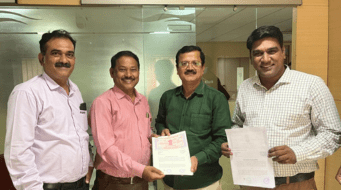COVID-19 and subsequent lockdowns dealt a severe blow to the livestock sector in India and exposed pastoralists and livestock keepers in the country to prolonged economic uncertainty
by Dada R Dadas

Livestock play a significant role in poverty reduction providing food and nutrition security through consumption and livelihood generation. The sector is a major protein source for the poorest sections of societies in developing economies like India. More importantly, animal rearing is an important source of income and livelihood for our rural communities.
The sector plays a vital role in India’s rural economy. Agriculture and allied sectors contribute about 30 per cent of the GDP (National Livestock Policy, 2013).
According to the NSSO’s 68th Round (2011-2012) survey 16.44 million people were engaged in animal husbandry, mixed farming, fishing and aquaculture. As per the 19th Livestock Census, there were about 300 million bovines in the country, 65.07 million sheep, 135.2 million goats and about 10.3 million pigs. According to the data, nearly 90% of livestock in India belong to more than 100 million smallholder farmers and women.

Impact of COVID-19
Since the last two months, COVID-19 has created severe problems for each and every sector. The lockdowns have not only affected the poor, migrant labourers and agriculturalists but have also challenged the survival of livestock and livestock keepers. Every sector is differently exposed to the effects of COVID-19. The impacts on the livestock sector, though, are not widely discussed. Henceforth, quantifying the impact is not easy.
Based on primary information, supply chains of livestock and livestock products were completely disrupted due to back-to-back lockdowns. As the market machinery collapsed, the survival of all livestock keepers are now under threat. Major challenges for the sector post-COVID-19 include lack of purchasing power among consumers and decreasing prices of livestock products. The demand for milk, meat and poultry nosedived. Alongside, accessibility to markets and transport is among the biggest challenges for livestock keepers. Inter-country and intra-country trade chains were disrupted as well.
All the above mentioned hurdles resulted in total disruption of the economy and survival of the livestock keepers. Without income, livestock keepers are not in a position to afford feed and fodder, which will further lead to starvation of animals. These are issues which will create a long term impact on the sustainability of the sector. In the near future, these disruptions will grow dramatically and will render livestock keepers to a poor socio-economic state. Even access to veterinary care for the livestock is becoming increasingly difficult.

Livelihood is an important thematic area at WOTR. Livestock play an important role in sustaining livelihoods of millions who are dependent on it. WOTR has worked on the livestock sector in regions where the organisation has a presence. Therefore it is important to understand the impact of COVID-19 on livestock. This blog makes an attempt to analyse the impact of COVID-19 on the sector.
Inaccessibility of feed/fodder and water resources
Since access to markets is disrupted, livestock keepers are already facing economic pressure. They are not in a position to buy feed and fodder for their sheep, goat, cattle or poultry. Livestock keepers are largely dependent on common pastures for grazing. Now, they are facing restrictions on the movement of livestock. Villagers are not permitting pastoralists to enter villages as well as fields.
Restrictions on movement is creating problems in accessing water sources for the livestock. This issue is primarily faced by pastoralists who rear sheep, goats and cattle.
Production of dairy, poultry and meat
Due to limited access to feed and fodder resources, production of livestock consumables such as dairy, poultry and meat is not taking place in the same quality and quantity as before. It means the lockdown essentially broke the back of the livestock products flow. Because of this, earnings through livestock produce plummeted. Women in rural areas are dependent on ruminants and poultry. Due to lower demand for small ruminants and poultry, earnings of women are at risk as well. Altogether, this may further affect the food security of millions of people in rural India.

Sale and consumption of livestock produce
Due to the COVID-19 lockdown, the sale and consumption of the animal products like meat, milk and poultry are suffering. Due to loss of income, most of the consumers are not buying livestock products. The net result is a rising financial burden for livestock keepers.
Sale of milk
Soon after the lockdown, milk collection was severely hit. At present, milk collection is not taking place as it was pre-COVID-19. Even the hotels and sweet shops which are majorly dependent on dairy are closed; therefore the demand for dairy products has fallen further. Since milk and milk products are highly perishable, livestock keepers cannot defer the sale of milk and milk-based products. As there are very limited storage capacities, sale of produce is of utmost importance for livestock keepers. Hence, those dependent on dairy are facing massive financial losses.
Sale of meat
Meat products, as we are aware, are highly perishable too. The livestock (sheep, goats, poultry) used for meat are supposed to be sold within a specific timeframe. If the livestock keepers fail to sell meat products within this timeframe, it results in huge economic losses. Sale of meat is highly dependent on local and informal markets. Markets adjacent to the rural areas were entirely closed down due to the lockdown. Since consumers have misconceptions about eating meat and the coronavirus infection, most of them have stopped opting for meat and chicken, dealing a huge economic blow to livestock keepers who raise animals for meat.
Inaccessible markets
Villages and markets were closed after the announcement of lockdown, restricting the mobility of livestock keepers and access to markets for the sale of livestock produce. Restrictions on transport disrupted supply and trade. Pastoralists were not in a position to reach markets and hence their informal trade networks collapsed. This has created huge livelihood losses across the country.
Impact on processing industry
The processing industry focussing on milk, poultry and meat is not adequately equipped with modern technology to process the products. There is also the issue of storage capacities, resulting in livestock products going spoilt. Additionally, access to labour for the processing industry has been difficult post lockdown.
Recommended actions

Based on the above factors, it is evidently clear that COVID-19 has left a deep scar on the livestock sector. Though health is the first priority, protection of livelihoods of the various vulnerable sections dependent on the sector is the need of the hour. Governments and policy makers should help mitigate the present and future impacts of COVID-19 on livestock and allied sectors. Solutions to these problems are too complex, as the issues that permanently settled livestock keepers and pastoralists are confronted with are varied. The interventions should be made focussing on a livestock-centred policy, budget and infrastructure to revive the sector. The authorities must focus on the following actions:
a. Supply of feed/fodder for the livestock
Access to feed and fodder for the livestock is crucial. Therefore, governments – the states and Centre – should focus on supply of feed and fodder for the livestock so that potential risk of starvation will be reduced.
b. Allowing access to market and transport facility
Permission for opening markets for livestock should be given priority keeping in mind physical distancing norms. Linking livestock keepers to markets (wholesalers, retailers and informal buyers) through transport should be of utmost importance.
c. Financial support
A financial package, if specifically announced for livestock keepers, they can afford feed and fodder. It will also help them to cope with the livelihood shock. The processing industry too should get support to increase storage capacities, alongside modern storage and processing technology. Cash transfer should be done for collection of milk so that it shall function smoothly.





